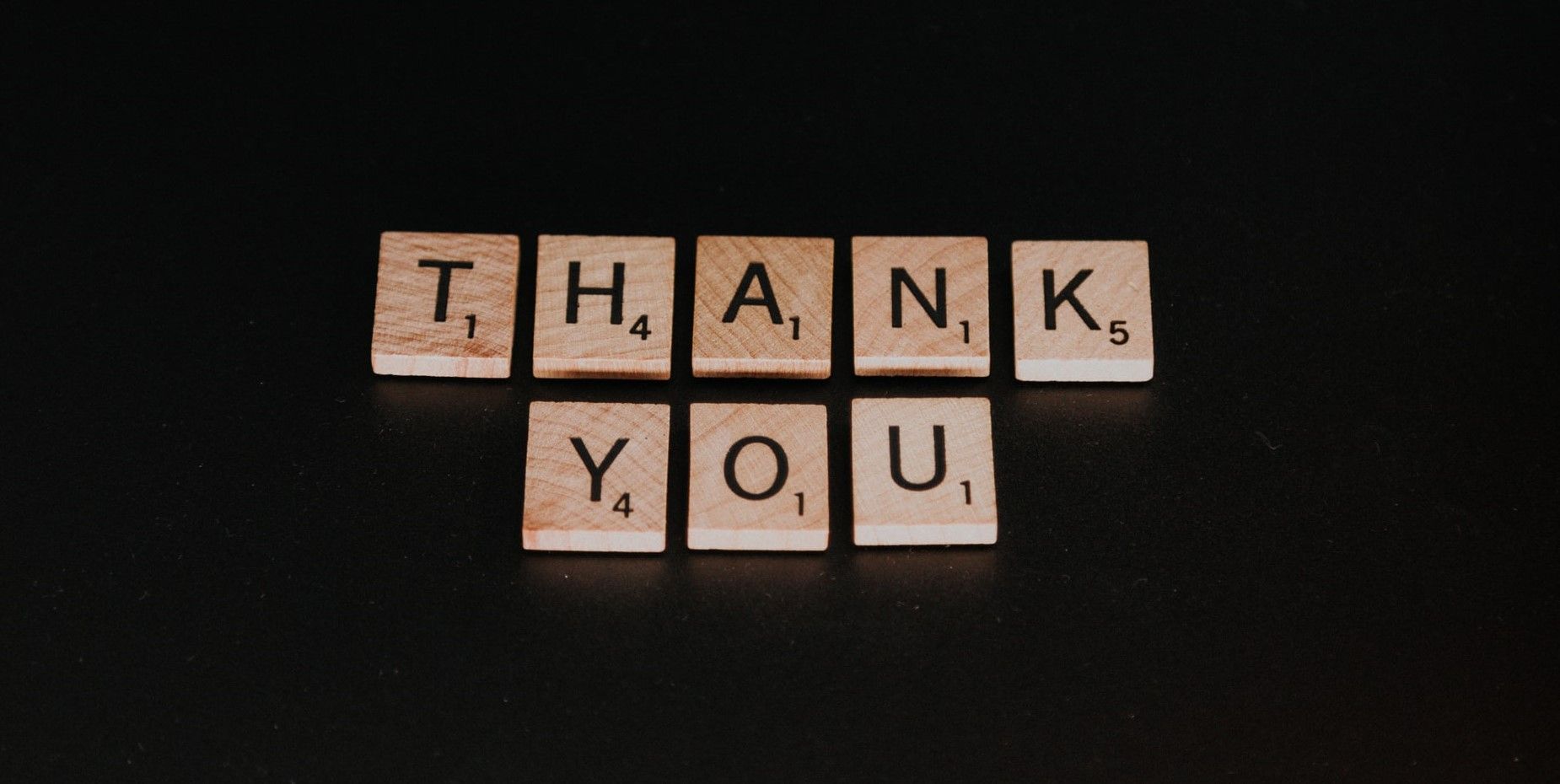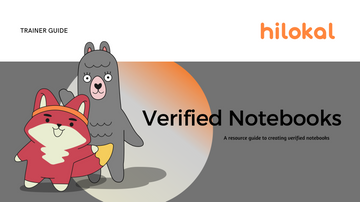As we learned from Barney as kids, "please" and "thank you" are the magic words, and today we are going to learn how to say thank you in Korean.
In Korean, there are many ways to be polite with your speech and also many ways to say “thank you”. What form of “thank you” is used depends on the situation you are in and your relationship with the person you are talking to.
Korean is a hierarchical language. This means that age, rank, and familiarity are important factors to take into account when communicating.
To use English as an example, with a boss or teacher you will likely have a more formal relationship and will usually interact with them in formal settings. Therefore when expressing gratitude you will most likely say “thank you”.
In contrast, when talking to friends or family, you will be more likely to say “thanks” or even just give a nod of appreciation.
Expressing gratitude in English and Korean are similar, you must match the word to the formality of the situation. I will list all of the ways you can say “thank you” and give explanations for what situations to use them in.
So without further ado, *drum roll sound effects* here are the many ways you can say “thank you” in Korean! Let's get to it!
4 ways to say “Thank you” in Korean
1) 감사합니다 (kam-sa-ham-ni-da)
If you have any experience with K-pop or Korean dramas, you might have heard the most common form of “thank you”, 감사합니다 (kam-sa-ham-ni-da).
This is the most formal form. It should be used when talking to people older than you, of a higher rank than you, or people you do not have a close relationship with. 감사합니다 (kam-sa-ham-ni-da) is safe to use in almost any context, so if you are ever in doubt, use this one!
감사합니다 (kam-sa-ham-ni-da) is usually followed by a slight bow to show respect to the person you are talking to. Bowing is common in Korea as a way of greeting people and showing gratitude. By lowering your head beneath who you are talking with, you are showing your respect.
You might have noticed that 감사합니다 (kam-sa-ham-ni-da) is not pronounced exactly how its spelled. While there is a ㅂ in 감사합니다, which makes the ‘b’ sound in English, there is no ‘b’ sound in 감사합니다 (kam-sa-ham-ni-da).
This is because when a ㅂ (‘b’ sound) is followed by a ㄴ (‘n’ sound) the prounciation changes to an ‘m’ sound. This is why 감사합니다 is pronounced (kam-sa-ham-ni-da) and not (kam-sa-hab-ni-da).
Here is a polite example sentence that you could use after someone helps you: :
도와주셔서 감사합니다 (do-wa-ju-shyuh-seo kam-sa-ham-ni-da)
Thank you for helping me
2) 고맙습니다 (ko-mab-seub-ni-da)
This is another formal version of “thank you”, but this version is used in slightly different situations than 감사합니다 (kam-sa-ham-ni-da). 고맙습니다 (ko-mab-seub-ni-da) is often used when you are a little more familiar with the person you are talking to, or in informal settings like a restaurant or to a taxi driver.
고맙습니다 (kam-sa-hab-ni-da) is usually followed with a bow.
It can often be hard to discern when to use these two, but practice makes perfect, and listening to native speakers really helps. If in doubt, use 감사합니다 (kam-sa-ham-ni-da) until you can get a better feel for when to use 고맙습니다 (ko-mab-seub-ni-da).
If you misuse it, don't worry! Koreans are usually very forgiving of those trying to learn their language.
Example:
생각해 주 셔서 고맙습니다 (saeng-gak-hae ju shyoh-seo ko-mab-seub-ni-da)
Thank you for the thought
3) 고마워요 (ko-ma-wo-yo)
This form is a step down from the formality of 고맙습니다 (ko-mab-seub-ni-da) and 감사합니다 (kam-sa-ham-ni-da). 고마워요 (ko-ma-wo-yo) is polite speech and is used with people you are familiar with, like a classmate or someone you are close in age with. Avoid using it with those who are older or higher in rank than you.
Example:
전화해 줘서 고마워요 (jun-hwa-hae jwo-seo ko-ma-wo-yo)
Thank you for the phone call
4) 고마워 (ko-ma-wo)
고마워 (ko-ma-wo) is a casual way of saying “thank you”. It has the feeling of ‘thanks’. It is used only with friends, family, and children. Do not use it, I repeat, do not use it with a stranger or someone older than you, unless you have agreed previously with that person to use informal language.
Example:
와줘서 고마워 (wa-jwo-seo ko-ma-wo)
Thanks for coming
These are the 4 main ways to say “thank you” in Korean. If you memorize these 4 words you will be able to say thank you in any situation. But more important than memorizing the words is understanding in which situations to use them.
So, to give you a clearer understanding of the many ways to say “thank you" in Korean, I have created a chart showing the level of formality of each version and the appropriate situation to use it in. Check it out below!
“Thank you” Chart
Now that you have learned the 4 most common ways to say “thank you” in Korean, it's time to learn how to respond. Just like with the different versions of “thank you”, the various ways to reply.
4 Responses to “Thank You”
1) 아닙니다 (ah-nim-ni-da)
This word literally translates to “it is not” or simply “no”. It is a humble way of responding to someone's gratitude and is similar to saying “it was nothing” or “don’t worry about it”. 아닙니다 (ah-nim-ni-da) is the most formal of the 3 variations of this word and is used with people older, higher in rank, or unfamiliar to you.
Korean culture really values humility. Generally, you’ll notice Koreans will not accept compliments directly. After receiving a compliment, rather than saying, “thanks!” a Korean will typically say, “no, I’m not”.
To fully adapt to the Korean language, you should also be humble. When a Korean person says, “You’re so good at Korean!” It’s more natural, and humble to say 아닙니다 (ah-nim-ni-da), than 감사합니다 (kam-sa-ham-ni-da).
You might notice that, similar to 감사합니다 (kam-sa-ham-ni-da), 아닙니다 (ah-nim-ni-da) has a ㅂ (‘b’ sound) followed by a ㄴ (‘n’ sound). This is why 아닙니다 is pronounced (ah-nim-ni-da) and not (ah-nib-ni-da).
The other forms of this word are 아니에요 (ah-ni-yeh-yo) and 아니야 (ah-ni-ya). 아니에요 (ah-ni-yeh-yo) is polite and is used with strangers, people you are unfamiliar with, as well as people you are moderately familiar with.
아닙니다 (ah-nim-ni-da) and 아니에요 (ah-ni-yeh-yo) are virtually interchangeable, though 아닙니다 (ah-nim-ni-da) expresses a higher level of respect.
아니야 (ah-ni-ya) is a casual version of this word and should only be used with friends, family, children, or someone you have previously agreed to use casual language with.
Let’s recap with some example sentences:
와 줘서 감사합니다 (wa-jwo-seo kam-sa-ham-ni-da)
Thank you for coming
아니에요 (ah-ni-eh-yo)
Its nothing
책 빌려줘서 고맙습니다 (chaek bil-ryeo-jwo-seo ko-mab-seub-ni-da)
Thank you for lending me the book
아닙니다 (ah-nim-ni-da)
Don’t worry about it
선물 고마워 (seon-mul ko-ma-wo)
Thanks for the present
아니야 (ah-ni-ya)
Its nothing
2) 천만에요 (chun-man-eh-yo)
천만에요 (chun-man-eh-yo) is formal speech and means “don’t mention it” or “its nothing”. You might not hear this expression used by native speakers very often as it is very formal and a little out of date. However, it is still important to know because you might read it somewhere or hear older Koreans use it.
Example:
밥 사 주셔서 감사합니다 (bap sa ju-shyeoh-seo kam-sa-ham-ni-da)
Thank you for buying me a meal
천만에요 (chun-man-eh-yo)
Don't mention it
3) 별말씀을요 (byul-mal-sseum-eul-yo)
This expression is another way to say “don’t mention it”. 별말씀을요 (byul-mal-sseum-eul-yo) is a formal expression and can be used with anyone that you do not use informal speech with.
Example:
오늘 도와줘서 감사합니다 (oh-neul do-wa-jwo-seo kam-sa-ham-ni-da)
Thank you for helping me today
별말씀을요 (byul-mal-sseum-eul-yo)
Don’t mention it
4) 괜찮습니다 (kwaen-chan-seub-ni-da)
This expression translates to “it is okay” and is used in formal situations. 괜찮습니다 (kwaen-chan-seub-ni-da) is the most formal version of the 3 variations of this word.
괜찮아요 (kwaen-chan-ah-yo) is moderately formal and 괜찮아(kwaen-chan-ah) is informal. The 3 versions of this word match up to the levels of formality we learned with 고맙습니다 (ko-mab-seub-ni-da) and 아닙니다 (ah-nim-ni-da).
Example:
알려 줘서 고마워! (al-ryeo jwo-seo ko-ma-wo)
Thank you for telling me!
괜찮아! (kwaen-chan-ah)
It's ok!
정말 감사합니다!(jeong-mal kam-sa-ham-ni-da)
Thank you very much!
괜찮습니다 (kwaen-chan-seub-ni-da)
It's okay!
Now you can express gratitude to someone and reply politely when people express gratitude to you. We have come so far already! If you feel that you have mastered these, or at least have a good understanding of them, let's spice “thank you” up with some words that can emphasize just how grateful we are.
3 Words to Add to “Thank You”
1) 정말 (jeong-mal)
This is an adjective meaning “really” that is often added to “thank you” to emphasize gratitude.
Example:
정말 고마워! (jeong-mal go-ma-wo)
Really, thank you!
2) 너무 (neo-mu)
너무 (neo-mu) literally translates to “very” or “too much”. This is also often added to “thank you”.
Example:
너무 감사합니다 (neo-mu kam-sa-ham-ni-da)
Thank you very much
3) 진심으로 (jin-sim-eu-ro)
This last one translates to “truly”, “sincerely” or “from the bottom of my heart”. It’s meant to give a heartfelt and earnest feeling when added on to “thank you”.
However, in situations other than formal gatherings, presentations, weddings or funerals, this expression comes off as tacky. Often this expression will be used ironically. Reserve 진심으로 (jin-sim-eu-ro) for when you really need it.
Example:
진심으로 고마워요 (jin-sim-eu-ro ko-ma-wo-yo)
I am truly grateful
Great work! Now, to complete your education in expressing gratitude and replying to expressions of gratitude in Korean, we must now delve into the cyber world of online slang.
“Thank You” and “Your Welcome” Slang
1) 땡큐 (ddaeng-kyu)
This is the Korean pronunciation of the English word ”thank you”. It can also be said as 쌩큐 (ssaeng-kyu). It is a very informal and cute way to say “thank you”. You can use it with friends when talking too.
Example:
니 책 돌려주었어 (ni chaek dol-ryeo-ju-eo-sseo)
I returned your book
응 땡큐 (eung ddaeng-kyu)
Ok thank you!
2) 감사 (kam-sa)
This is the shortened version of the previous forms of 감사합니다 (kam-sa-ham-ni-da) that we learned. It is very informal and should only be used with friends. It can be used in text, online, or in face-to-face conversations with your friends.
Example:
점심 사 줬어 (bap sa jwo-sseo)
I bought you lunch
감사 (oh kam-sa)
thank you
3) ㄱ ㅅ (k s)
This is an acronym for 감사 (kam-sa). Koreans often use acronyms online or when texting with people they are close to. This is only used when writing in informal settings online or in text messages. It is not used when speaking.
Example:
다 고쳤어! (ta go-chyeo-sseo)
I fixed all of it!
ㄱ ㅅ ㄱ ㅅ (k s k s)
Thank you thank you
Now you are fluent in expressing gratitude and replying to expressions of gratitude! You have come so far and learned so much!
In this lesson you learned 4 ways to say “thank you”, 4 ways to respond to “thank you”, 3 words to emphasize gratitude, and 3 slang words. Here are all the words you learned listed out for your reference.
Koran Thank you Vocabulary List
| Audio | English | Pronunciation | Speech Level |
|---|---|---|---|
| Thank you | gamsahapnida | Formal | |
| Thank you | gomapseupnida | Formal | |
| Thank you | gomawoyo | Polite | |
| Thanks | gomawo | Casual | |
| It's nothing | anipnida | Formal | |
| It's nothing | anieyo | Polite | |
| Don't mention it | cheonmaneyo | Polite | |
| Don’t mention it | byeolmalsseumeuryo | Polite | |
| It's okay | gwaenchansseupnida | Formal | |
| It's okay | gwaenchanayo | Polite | |
| It's okay | gwaenchana | Casual | |
| Really | jeongmal | Any | |
| Very | neomu | Any | |
| Sincerely, truly | jinsimeuro | Any | |
| Thank you | ttaengkyu | Casual | |
| Thanks | gamsa | Casual | |
| Thanks | k s | Texting |
You have learned 17 new words today and can now say “thank you” in virtually every situation. Make sure to practice these words to convert them to memory and think about the different situations they might be used in.
K-pop and K-dramas are always good resources for listening practice and learning the proper context of words. Also, don’t be afraid to get out there and use your newly learned politeness out in the world. Remember Koreans are very forgiving of those learning their language, so don't be afraid to mess up!
Thanks for reading this lesson to the end! 그럼 다시 만날 때까지 (until we meet again)



